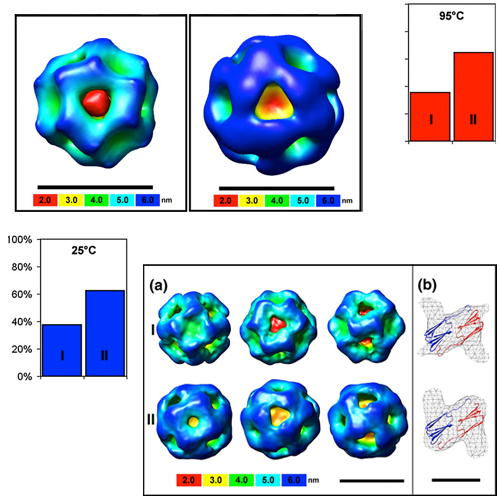Structural Dynamics of Archaeal Small Heat Shock Proteins
12-Feb-2008
Small heat shock proteins (sHsps) are a widespread and diverse class of molecular chaperones. In vivo, sHsps contribute to thermotolerance. Recent evidence suggests that their function in the cellular chaperone network is to maintain protein omeostasis by complexing a variety of non-native proteins. One of the most characteristic features of sHsps is their organization into large, sphere-like structures commonly consisting of 12 or 24 subunits. Here, we investigated the functional and structural properties of Hsp20.2, an sHsp from Archaeoglobus fulgidus, in comparison to its relative, Hsp16.5 from Methanocaldococcus jannaschii. sp20.2 is active in suppressing the aggregation of different model substrates at physiological and heat-stress temperatures. Electron microscopy showed that Hsp20.2 forms two distinct types of octahedral oligomers of slightly different sizes, indicating certain structural flexibility of the oligomeric assembly. By three-dimensional analysis of electron microscopic images of negatively stained specimens, we were able to reconstitute 3D models of the assemblies at a resolution of 19 Å. Under conditions of heat stress, the distribution of the structurally different Hsp20.2 assemblies changed, and this change was correlated with an increased chaperone activity. In analogy to Hsp20.2, Hsp16.5 oligomers displayed structural dynamics and exhibited increased chaperone activity under conditions of heat stress. Thus, temperature-induced conformational regulation of the activity of sHsps may be a general phenomenon in hermophilic archaea.











